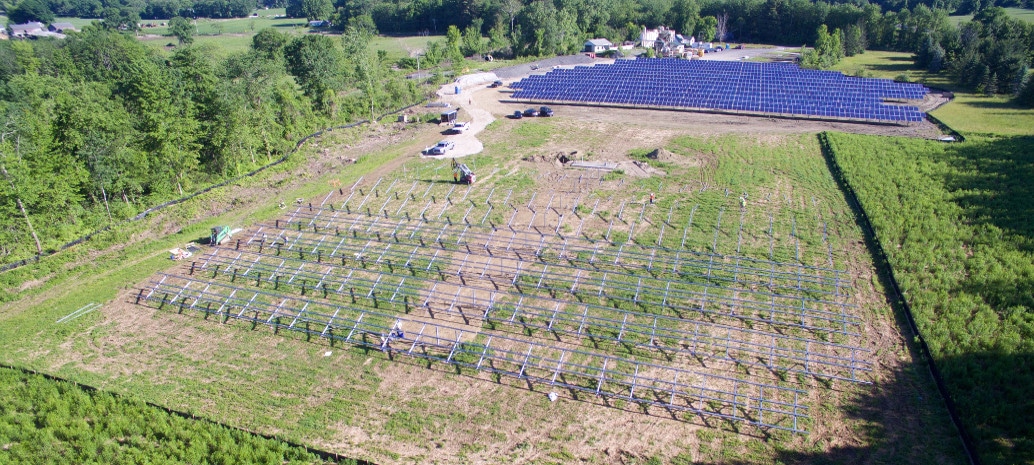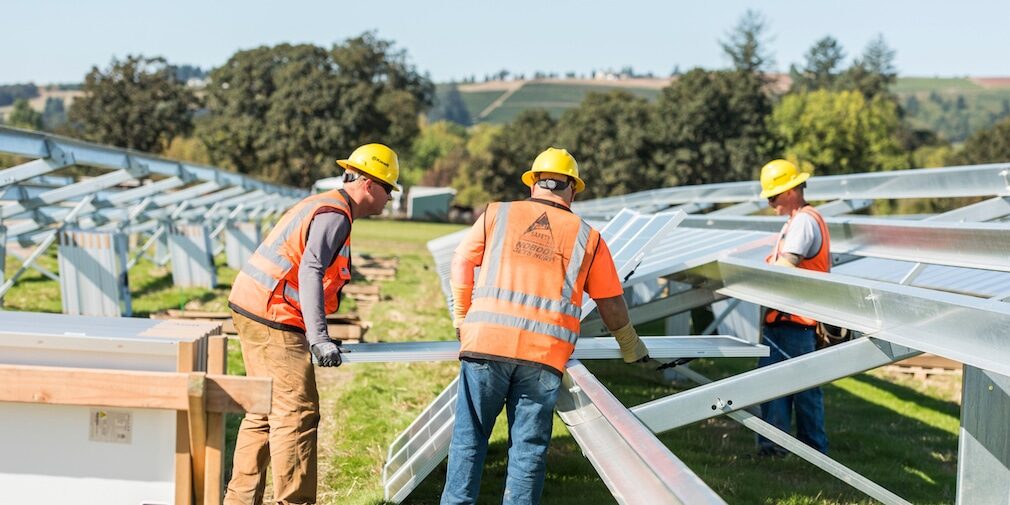Final U.S. tariffs on steel and aluminum have not been formally published, but the makers of solar racking, tracking and mounting systems say that they are already seeing higher prices, and concerns that this will affect their business and the larger solar market.
So far we have only the informal statements of President Trump to go on. Costa Nicolaou, the CEO of U.S. mounting systems maker PanelClaw, notes that there is still inadequate information on the details of the tariffs to be able to say for certain what the impact will be on his business. But he was able to draw certain conclusions.
“U.S. steel prices will go up, and foreign steel prices will go up,” Nicolaou told pv magazine. “Steel prices have already gone up on the threat of the tariffs.”
1-3 cents
Camron Barati, a senior analyst for solar and energy storage at IHS Markit, says that his team is still evaluating the potential impacts of the tariffs at the 25% for steel and 10% for aluminum levels that Trump has announced.
However, he concurred with an earlier statement by Roth Capital estimating the potential impact of the tariffs is in the 1-3 cent per watt range. He further breaks down this figure by estimating a 1 to 1 1/2 cent per watt increase for fixed-tilt systems, and a 2 cent or greater impact for trackers.
And as was the case in Trump’s PV cell and module tariffs under Section 201, Barati says the greatest impact will be on utility-scale systems. However, each of the nation’s dozens of racking, tracking and mounting systems makers will be affected differently, depending on the portion of aluminum and steel in their designs, where they source materials.
It is also unclear how much of these costs will be passed on to consumers, and how much manufacturers will absorb them as part of lower margins. Barati estimates that instead of a jump in prices, customers are more likely to see racking, tracking and mounting system prices remaining flat for some time, while other PV system costs fall.
America First?
Another factor is how much of a company’s manufacturing is located in the United States. Nicolaou of PanelClaw says contrary to Trump’s “America First” rhetoric, that the tariffs are leading him to re-assess how much of demand he will steer to PanelClaw’s U.S. factories, and how much to his overseas production.
The cumulative impact of this could be significant for solar employment. According to the Solar Foundation’s most recent National Solar Jobs Census, 1/3 of the 37,000 workers employed in U.S. solar manufacturing make mounting systems and hardware. However the total number for this sector is likely higher, as this number does not appear to include manufacturing of solar tracking systems.
“Tariffs will have a negative impact on the solar sector, and on the U.S. economy,” argues Nicolaou. “Period.”
This content is protected by copyright and may not be reused. If you want to cooperate with us and would like to reuse some of our content, please contact: editors@pv-magazine.com.









By submitting this form you agree to pv magazine using your data for the purposes of publishing your comment.
Your personal data will only be disclosed or otherwise transmitted to third parties for the purposes of spam filtering or if this is necessary for technical maintenance of the website. Any other transfer to third parties will not take place unless this is justified on the basis of applicable data protection regulations or if pv magazine is legally obliged to do so.
You may revoke this consent at any time with effect for the future, in which case your personal data will be deleted immediately. Otherwise, your data will be deleted if pv magazine has processed your request or the purpose of data storage is fulfilled.
Further information on data privacy can be found in our Data Protection Policy.